《C++ string 完全指南:从基础到高效使用》
文章目录
一、STL简介
STL是 C++标准库的重要组成部分 ,不仅是一个可复用的组件库,而且是
一个包罗 数据结构与算法的软件框架
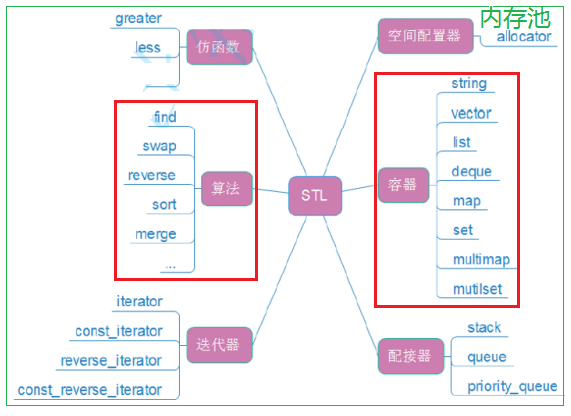
二、string类
1.C语言中的字符串
C语言中,字符串是以’\0’结尾的一些字符的集合,为了操作方便,C标准库中提供了一些str系列
的库函数,但是这些库函数与字符串是分离开的,不太符合OOP的思想,而且底层空间需要用户
自己管理,稍不留神可能还会越界访问。
2.标准库中的string类
在使用string类时,必须包含 #include头文件以及using namespace std;
2.1 auto关键字
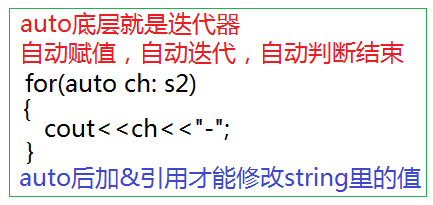

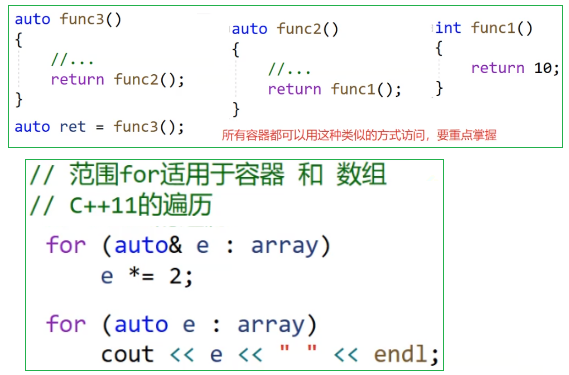

2.2 范围for

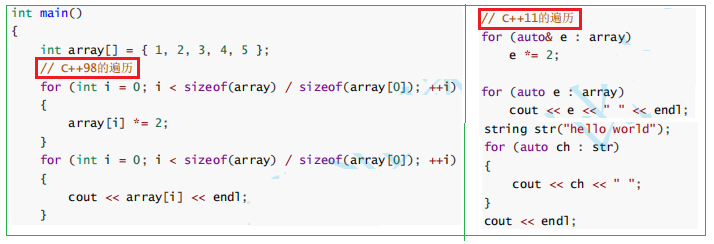
2.3 string类的常用接口说明
2.3.1 string迭代器(正向和反向)
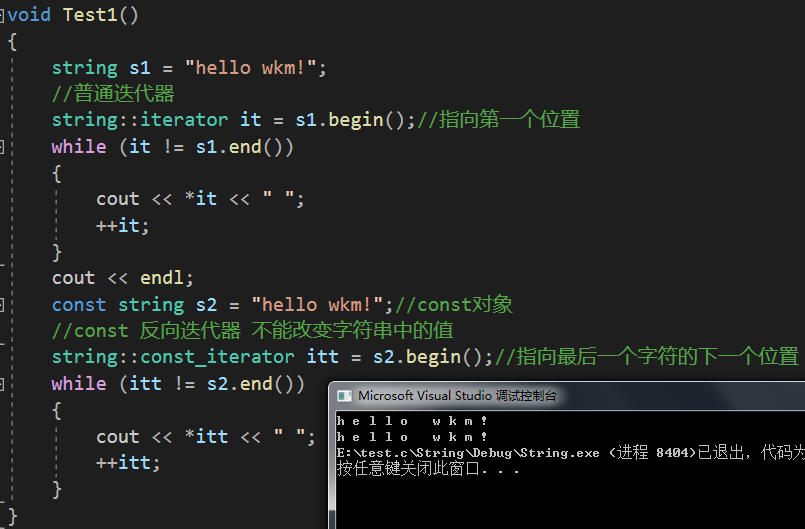
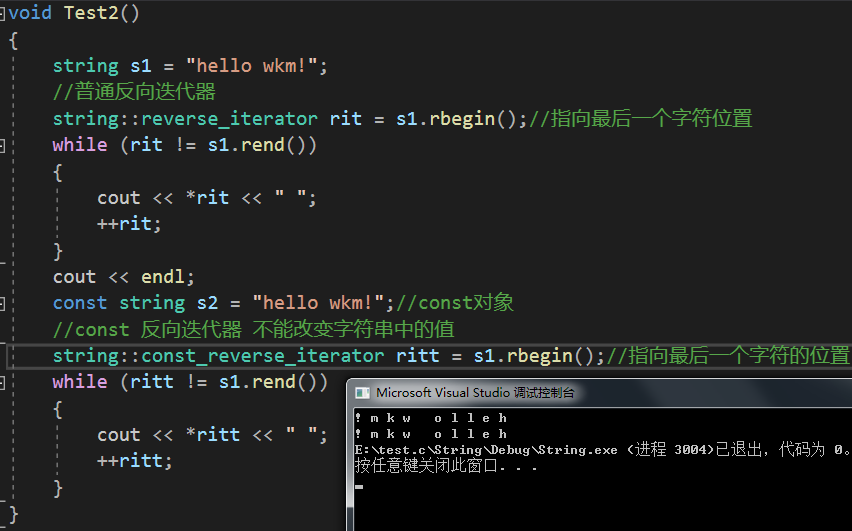
2.3.2 string类对象常见构造
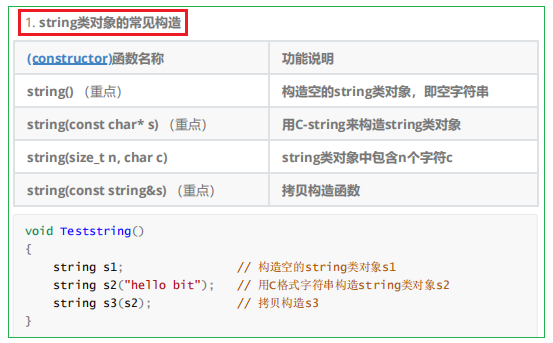
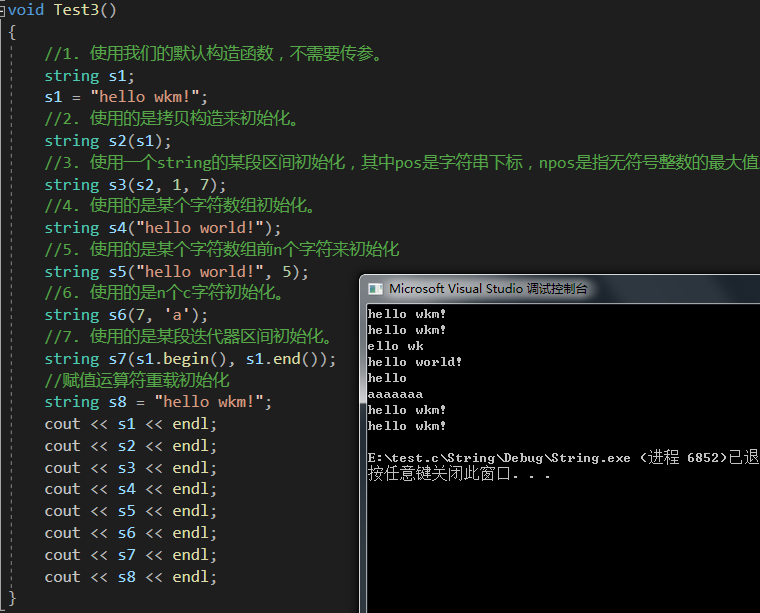
2.3.3 string类对象的容量操作
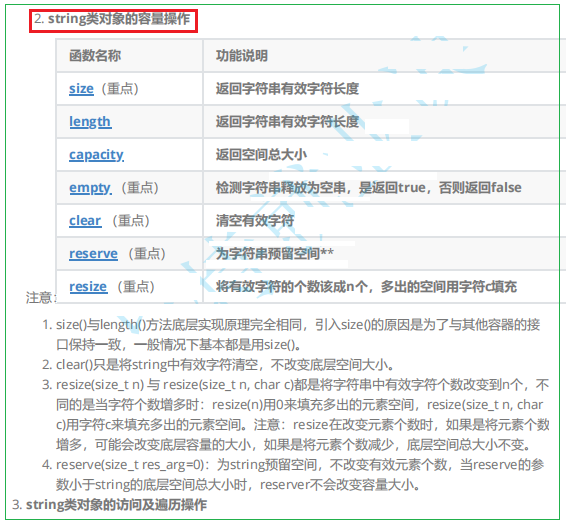

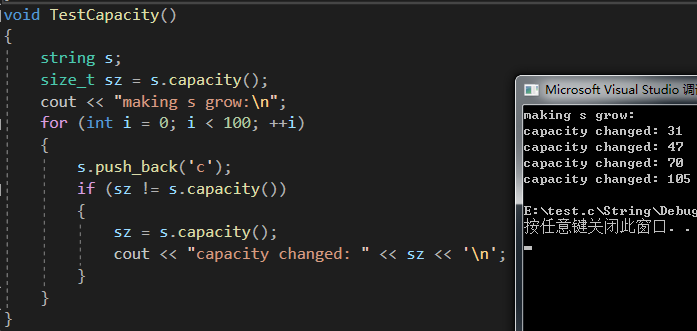
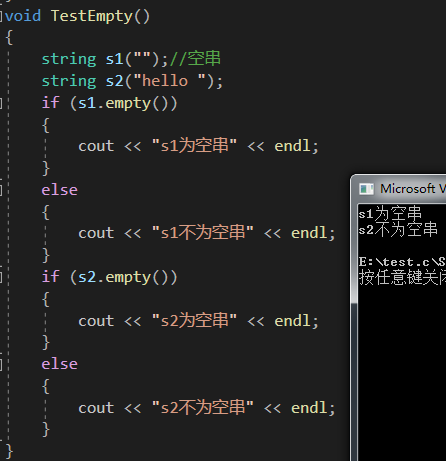
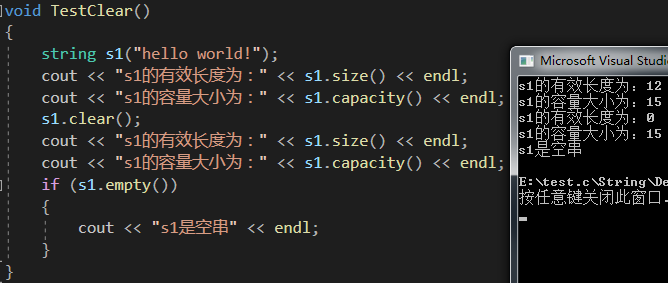
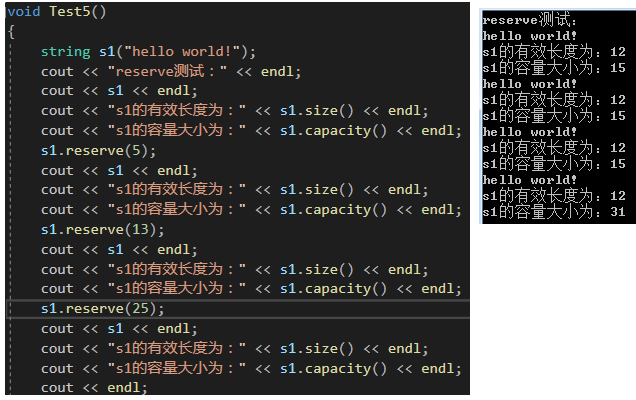
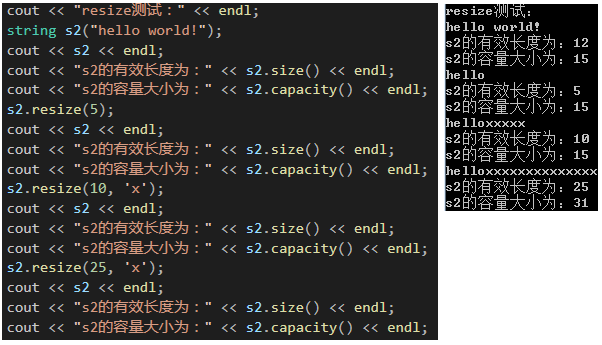

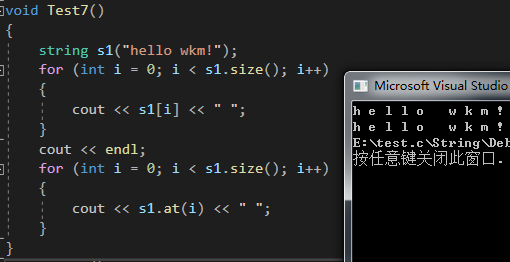
2.3.3 string类对象的访问及遍历操作
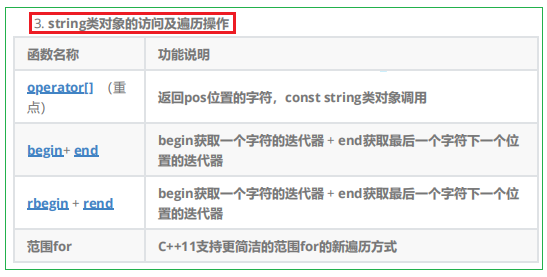
2.3.4 string类对象的修改操作
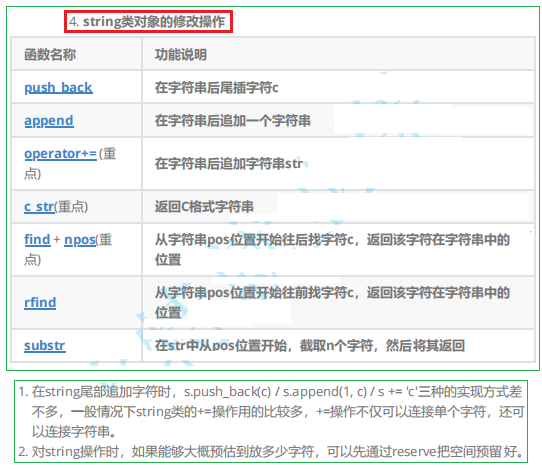
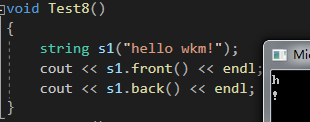
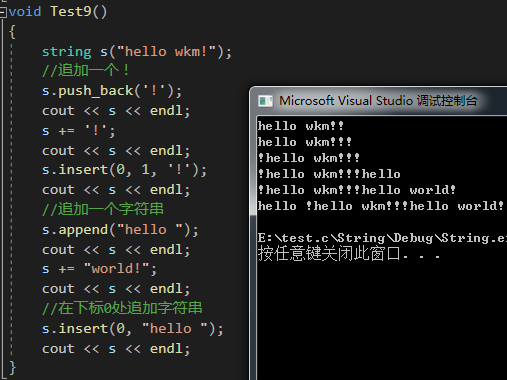
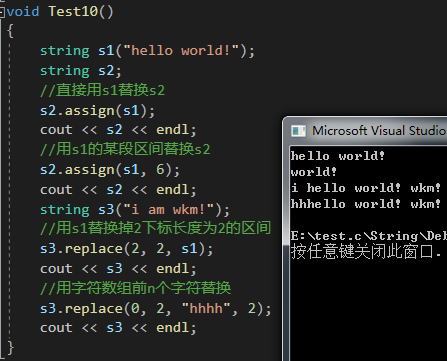
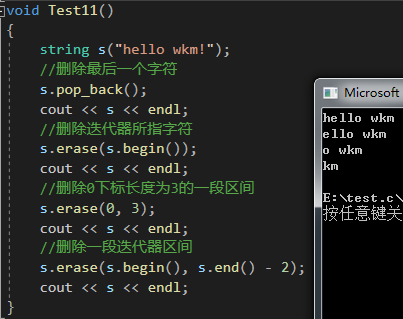
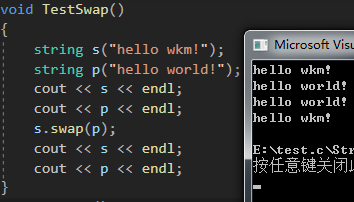
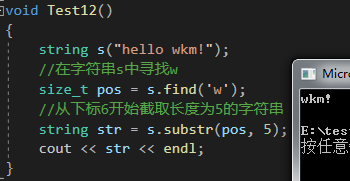
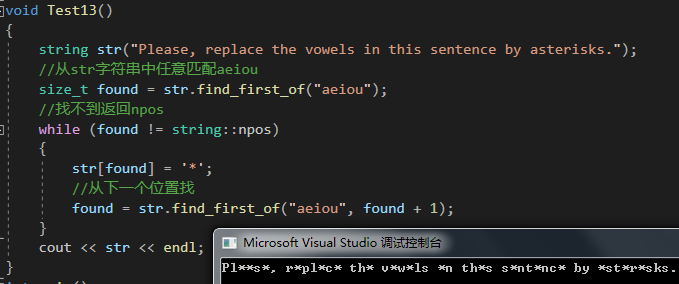
2.3.5 string类非成员函数
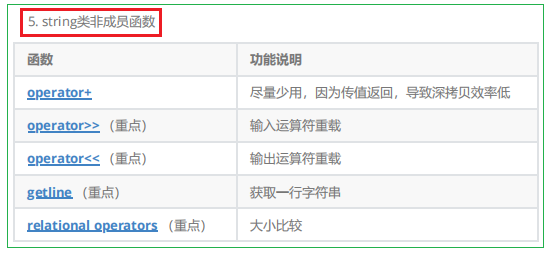
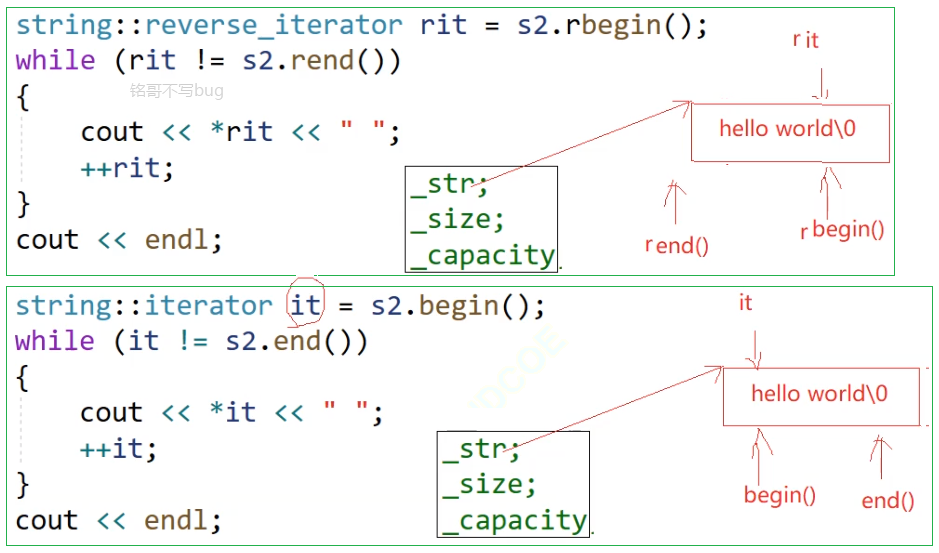
源代码展示
代码如下(示例):
#include<iostream>
#include<string>
#include<assert.h>
using namespace std;
void Test1()
{
string s1 = "hello wkm!";
//普通迭代器
string::iterator it = s1.begin();//指向第一个位置
while (it != s1.end())
{
cout << *it << " ";
++it;
}
cout << endl;
const string s2 = "hello wkm!";//const对象
//const 反向迭代器 不能改变字符串中的值
string::const_iterator itt = s2.begin();//指向最后一个字符的下一个位置
while (itt != s2.end())
{
cout << *itt << " ";
++itt;
}
}
void Test2()
{
string s1 = "hello wkm!";
//普通反向迭代器
string::reverse_iterator rit = s1.rbegin();//指向最后一个字符位置
while (rit != s1.rend())
{
cout << *rit << " ";
++rit;
}
cout << endl;
const string s2 = "hello wkm!";//const对象
//const 反向迭代器 不能改变字符串中的值
string::const_reverse_iterator ritt = s1.rbegin();//指向最后一个字符的位置
while (ritt != s1.rend())
{
cout << *ritt << " ";
++ritt;
}
}
void Test3()
{
//1. 使用我们的默认构造函数,不需要传参。
string s1;
s1 = "hello wkm!";
//2. 使用的是拷贝构造来初始化。
string s2(s1);
//3. 使用一个string的某段区间初始化,其中pos是字符串下标,npos是指无符号整数的最大值。
string s3(s2, 1, 7);
//4. 使用的是某个字符数组初始化。
string s4("hello world!");
//5. 使用的是某个字符数组前n个字符来初始化
string s5("hello world!", 5);
//6. 使用的是n个c字符初始化。
string s6(7, 'a');
//7. 使用的是某段迭代器区间初始化。
string s7(s1.begin(), s1.end());
//赋值运算符重载初始化
string s8 = "hello wkm!";
cout << s1 << endl;
cout << s2 << endl;
cout << s3 << endl;
cout << s4 << endl;
cout << s5 << endl;
cout << s6 << endl;
cout << s7 << endl;
cout << s8 << endl;
}
void Test4()
{
string s("hello wkm!");
cout << s.size() << endl;//有效长度
cout << s.length() << endl;//有效长度
cout << s.capacity() << endl;//容量大小
cout << s.max_size() << endl;//最大大小
}
void TestCapacity()
{
string s;
size_t sz = s.capacity();
cout << "making s grow:\n";
for (int i = 0; i < 100; ++i)
{
s.push_back('c');
if (sz != s.capacity())
{
sz = s.capacity();
cout << "capacity changed: " << sz << '\n';
}
}
}
void TestEmpty()
{
string s1("");//空串
string s2("hello ");
if (s1.empty())
{
cout << "s1为空串" << endl;
}
else
{
cout << "s1不为空串" << endl;
}
if (s2.empty())
{
cout << "s2为空串" << endl;
}
else
{
cout << "s2不为空串" << endl;
}
}
void TestClear()
{
string s1("hello world!");
cout << "s1的有效长度为:" << s1.size() << endl;
cout << "s1的容量大小为:" << s1.capacity() << endl;
s1.clear();
cout << "s1的有效长度为:" << s1.size() << endl;
cout << "s1的容量大小为:" << s1.capacity() << endl;
if (s1.empty())
{
cout << "s1是空串" << endl;
}
}
void Test5()
{
string s1("hello world!");
cout << "reserve测试:" << endl;
cout << s1 << endl;
cout << "s1的有效长度为:" << s1.size() << endl;
cout << "s1的容量大小为:" << s1.capacity() << endl;
s1.reserve(5);
cout << s1 << endl;
cout << "s1的有效长度为:" << s1.size() << endl;
cout << "s1的容量大小为:" << s1.capacity() << endl;
s1.reserve(13);
cout << s1 << endl;
cout << "s1的有效长度为:" << s1.size() << endl;
cout << "s1的容量大小为:" << s1.capacity() << endl;
s1.reserve(25);
cout << s1 << endl;
cout << "s1的有效长度为:" << s1.size() << endl;
cout << "s1的容量大小为:" << s1.capacity() << endl;
cout << endl;
cout << "resize测试:" << endl;
string s2("hello world!");
cout << s2 << endl;
cout << "s2的有效长度为:" << s2.size() << endl;
cout << "s2的容量大小为:" << s2.capacity() << endl;
s2.resize(5);
cout << s2 << endl;
cout << "s2的有效长度为:" << s2.size() << endl;
cout << "s2的容量大小为:" << s2.capacity() << endl;
s2.resize(10, 'x');
cout << s2 << endl;
cout << "s2的有效长度为:" << s2.size() << endl;
cout << "s2的容量大小为:" << s2.capacity() << endl;
s2.resize(25, 'x');
cout << s2 << endl;
cout << "s2的有效长度为:" << s2.size() << endl;
cout << "s2的容量大小为:" << s2.capacity() << endl;
}
void Test6()
{
string s1("hello world!");
cout << s1 << endl;
cout << "s1的有效长度为:" << s1.size() << endl;
cout << "s1的容量大小为:" << s1.capacity() << endl;
s1.reserve(100);//先扩容
cout << "扩容后s1的有效长度为:" << s1.size() << endl;
cout << "扩容后s1的容量大小为:" << s1.capacity() << endl;
s1.shrink_to_fit();//再缩容
cout << "缩容后s1的有效长度为:" << s1.size() << endl;
cout << "缩容后s1的容量大小为:" << s1.capacity() << endl;
}
void Test7()
{
string s1("hello wkm!");
for (int i = 0; i < s1.size(); i++)
{
cout << s1[i] << " ";
}
cout << endl;
for (int i = 0; i < s1.size(); i++)
{
cout << s1.at(i) << " ";
}
}
void Test8()
{
string s1("hello wkm!");
cout << s1.front() << endl;
cout << s1.back() << endl;
}
void Test9()
{
string s("hello wkm!");
//追加一个!
s.push_back('!');
cout << s << endl;
s += '!';
cout << s << endl;
s.insert(0, 1, '!');
cout << s << endl;
//追加一个字符串
s.append("hello ");
cout << s << endl;
s += "world!";
cout << s << endl;
//在下标0处追加字符串
s.insert(0, "hello ");
cout << s << endl;
}
void Test10()
{
string s1("hello world!");
string s2;
//直接用s1替换s2
s2.assign(s1);
cout << s2 << endl;
//用s1的某段区间替换s2
s2.assign(s1, 6);
cout << s2 << endl;
string s3("i am wkm!");
//用s1替换掉2下标长度为2的区间
s3.replace(2, 2, s1);
cout << s3 << endl;
//用字符数组前n个字符替换
s3.replace(0, 2, "hhhh", 2);
cout << s3 << endl;
}
void Test11()
{
string s("hello wkm!");
//删除最后一个字符
s.pop_back();
cout << s << endl;
//删除迭代器所指字符
s.erase(s.begin());
cout << s << endl;
//删除0下标长度为3的一段区间
s.erase(0, 3);
cout << s << endl;
//删除一段迭代器区间
s.erase(s.begin(), s.end() - 2);
cout << s << endl;
}
void TestSwap()
{
string s("hello wkm!");
string p("hello world!");
cout << s << endl;
cout << p << endl;
s.swap(p);
cout << s << endl;
cout << p << endl;
}
void Test12()
{
string s("hello wkm!");
//在字符串s中寻找w
size_t pos = s.find('w');
//从下标6开始截取长度为5的字符串
string str = s.substr(pos, 5);
cout << str << endl;
}
void Test13()
{
string str("Please, replace the vowels in this sentence by asterisks.");
//从str字符串中任意匹配aeiou
size_t found = str.find_first_of("aeiou");
//找不到返回npos
while (found != string::npos)
{
str[found] = '*';
//从下一个位置找
found = str.find_first_of("aeiou", found + 1);
}
cout << str << endl;
}
int main()
{
//Test1();
//Test2();
//Test3();
//Test4();
//TestCapacity();
//TestEmpty();
//TestClear();
//Test5();
//Test6();
//Test7();
//Test8();
//Test9();
//Test10();
//Test11();
//TestSwap();
//Test12();
Test13();
}
总结
本文介绍了string的使用,感谢你的关注